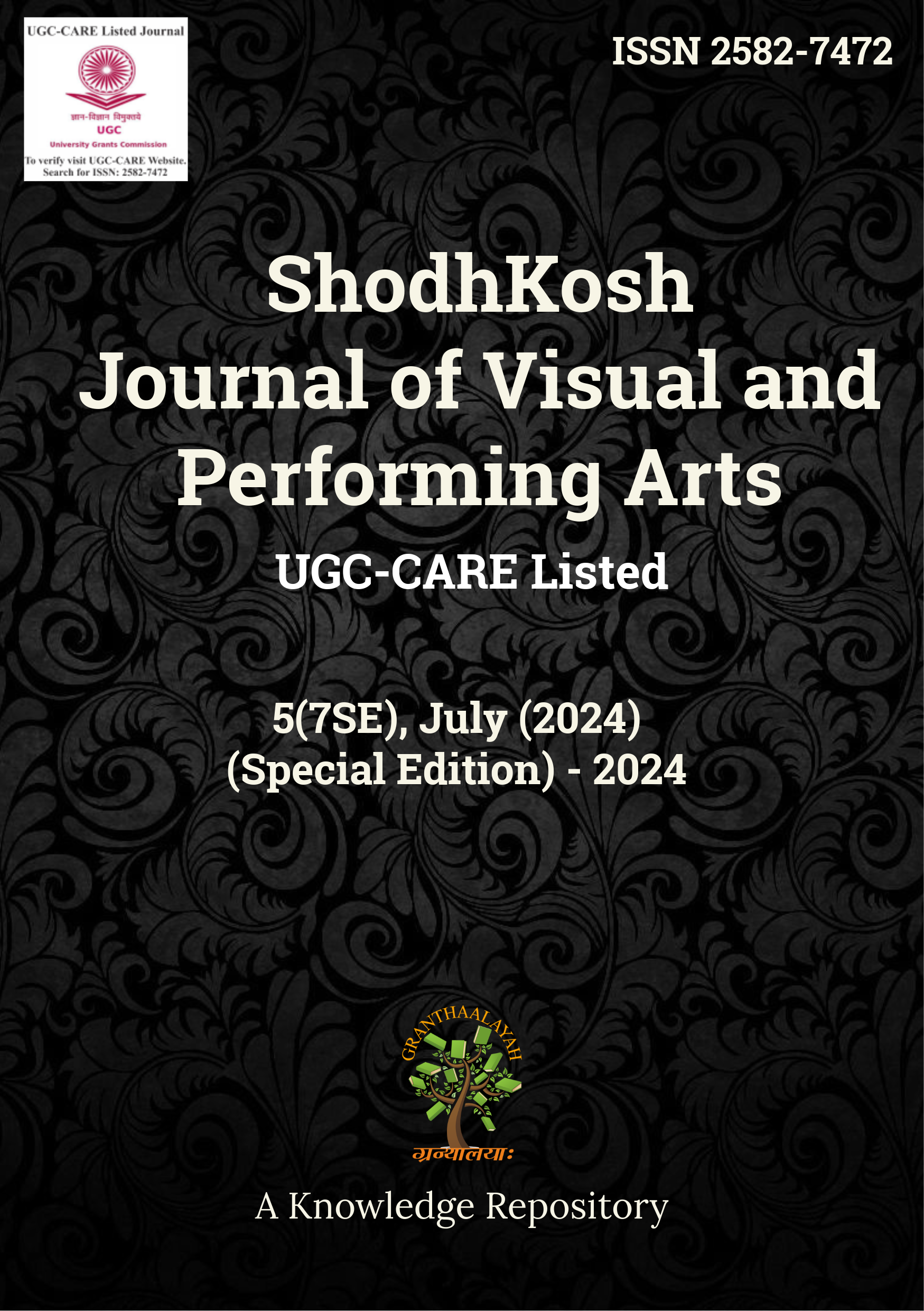THE EVOLUTION OF PROSTHETIC LIMBS AND THEIR ROLE IN AMPUTEE ATHLETES' PERFORMANCE
DOI:
https://doi.org/10.29121/shodhkosh.v5.i7SE.2024.5871Keywords:
Prosthetic Limbs, Amputee Athletes, Performance, Prosthetic Technology, Sports Prosthetics, Wearable TechnologyAbstract [English]
The evolution of prosthetic limbs has significantly reshaped the landscape of athletic performance for amputee athletes. This paper examines how advancements in prosthetic technology, such as carbon fiber running blades, bionic limbs, and myoelectric prosthetics, have enhanced performance, allowing athletes to engage in competitive sports at elite levels. Through a qualitative review of existing literature, this study synthesizes key technological developments, the biomechanical benefits of modern prosthetics, and the psychological impact on amputee athletes. The review also includes an exploration of wearable technologies, which support performance tracking and training optimization. Additionally, the paper delves into the challenges related to cost and accessibility while looking at the future potential of prosthetic innovations in sports. By analyzing case studies and expert perspectives, this research provides insights into the transformative role of prosthetics in breaking barriers for amputee athletes.
References
Boonshoft-White, J. (2024). Prosthetics for Osiris: Evidence for Assistive Technology in Ancient Egypt. In Handbook of Disability (pp. 69–87). https://doi.org/10.1007/978-981-19-6056-7_67 DOI: https://doi.org/10.1007/978-981-19-6056-7_67
Bretschneider, M., Meyer, B., & Asbrock, F. (2023). The impact of bionic prostheses on users’ self-perceptions: A qualitative study. Acta Psychologica, 241. https://doi.org/10.1016/j.actpsy.2023.104085 DOI: https://doi.org/10.1016/j.actpsy.2023.104085
Bruil, M., Dijkema, J., & Draaijer, S. (2020). Blade prosthetics ; their impact on the sport and the technical aspects that come with them. https://susan.draaijer.com/wp-content/uploads/2022/04/Position_Paper_Group_21_version_9.pdf
Burden, N., Simpson, J., Murray, C., Overton, P. G., & Powell, P. A. (2018). Prosthesis use is associated with reduced physical self-disgust in limb amputees. Body Image, 27, 109–117. https://doi.org/10.1016/j.bodyim.2018.08.001 DOI: https://doi.org/10.1016/j.bodyim.2018.08.001
Fleming, A., Stafford, N., Huang, S., Hu, X., Ferris, D. P., & Huang, H. H. (2021). Myoelectric control of robotic lower limb prostheses: A review of electromyography interfaces, control paradigms, challenges and future directions. In Journal of Neural Engineering (Vol. 18, Issue 4). https://doi.org/10.1088/1741-2552/ac1176 DOI: https://doi.org/10.1088/1741-2552/ac1176
González, E. Z. (2022). Continuous Myoelectric Prediction of Future Ankle Kinematics and Kinetics for the Control of Active Powered Prostheses. Dissertations (1934 -). https://epublications.marquette.edu/dissertations_mu/2036/
Jones, C., & Wilson, C. (2009). Defining advantage and athletic performance: The case of Oscar Pistorius. European Journal of Sport Science, 9(2), 125–131. https://doi.org/10.1080/17461390802635483 DOI: https://doi.org/10.1080/17461390802635483
Katsanou, A. L., Anagnostopoulos, F., & Fragkiadaki, E. (2020). The adjustment and new identity of athletes with prosthetic limbs: A qualitative study. Archives of Hellenic Medicine, 37(4), 504–514. https://search.ebscohost.com/login.aspx?direct=true&profile=ehost&scope=site&authtype=crawler&jrnl=11053992&AN=145649513&h=dqVHjInDjhFX85kbHuzlYbIoNaMhq3Wj%2FskbTy4ABWxaC6Ds4Id8%2F13pblpekl6tPkcuaEGjzspU8mRV0KKJ4A%3D%3D&crl=c
Nolan L. (2008). Carbon fibre prostheses and running in amputees: A review. Foot and Ankle Surgery. https://www.sciencedirect.com/science/article/pii/S1268773108000672 DOI: https://doi.org/10.1016/j.fas.2008.05.007
Pandey, A. & S. P. (2016). Limb prostheses: Industry 1.0 to 4.0: Perspectives on technological advances in prosthetic care. http://www.frontiersin.org/language_sciences/10.3389/fpsyg.2011.00054/full
Park, S., Lee, J., Oh, Y. E., Lee, H. J., Jeon, I., Kim, K., & Lee, S. J. (2022). Improvements in hand functions and changes in proximal muscle activities in myoelectric prosthetic hand users at home: A case series. Prosthetics and Orthotics International, 46(6), 582–590. https://doi.org/10.1097/PXR.0000000000000139 DOI: https://doi.org/10.1097/PXR.0000000000000139
Silver-Thorn, M. B. (2004). Design of artificial limbs for lower extremity amputees. Standard Handbook of Biomedical Engineering and Design, 1–30. http://server0.unhas.ac.id/tahir/BAHAN-KULIAH/BIO-MEDICAL/NEW/HANBOOK/33DesignOfArtificialLimbsForLowerExtremityAmputees.pdf
Tuakli-Wosornu, Y. A., Li, X., Ona Ayala, K. E., Wu, Y., Amick, M., & Frumberg, D. B. (2021). The Impact of Blade Technology on Paralympic Sprint Performance Between 1996 and 2016: Bilateral Amputees’ Competitive Advantage. Adapted Physical Activity Quarterly : APAQ, 38(3), 494–505. https://doi.org/10.1123/apaq.2020-0064 DOI: https://doi.org/10.1123/apaq.2020-0064
Wank, V., & Keppler, V. (2015). Advantages and disadvantages of athletes with artificial limbs compared to able-bodied competitors. Deutsche Zeitschrift Fur Sportmedizin, 66(11), 287–293. https://doi.org/10.5960/dzsm.2015.204 DOI: https://doi.org/10.5960/dzsm.2015.204
Waqar, A., Ahmad, I., Habibi, D., Hart, N., & Phung, Q. V. (2021). Enhancing Athlete Tracking Using Data Fusion in Wearable Technologies. IEEE Transactions on Instrumentation and Measurement, 70. https://doi.org/10.1109/TIM.2021.3069520 DOI: https://doi.org/10.1109/TIM.2021.3069520
Beck, O. N., Taboga, P., & Grabowski, A. M. (2022). Sprinting with prosthetic versus biological legs: insight from experimental data. Royal Society open science, 9(1), 211799. DOI: https://doi.org/10.1098/rsos.211799
De Luigi, A. J. (2024). The effects on sports performance of technologic advances in sports prostheses and wheelchairs. PM&R, 16(4), 409-417. DOI: https://doi.org/10.1002/pmrj.13153
Downloads
Published
How to Cite
Issue
Section
License
Copyright (c) 2024 Mohammed S. Mosaed, Kalpana B. Zarikar

This work is licensed under a Creative Commons Attribution 4.0 International License.
With the licence CC-BY, authors retain the copyright, allowing anyone to download, reuse, re-print, modify, distribute, and/or copy their contribution. The work must be properly attributed to its author.
It is not necessary to ask for further permission from the author or journal board.
This journal provides immediate open access to its content on the principle that making research freely available to the public supports a greater global exchange of knowledge.































